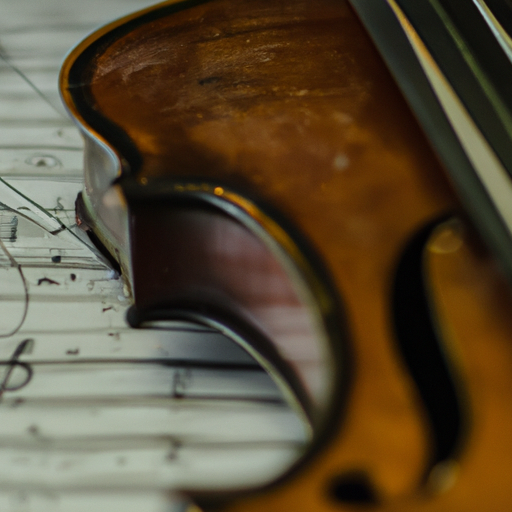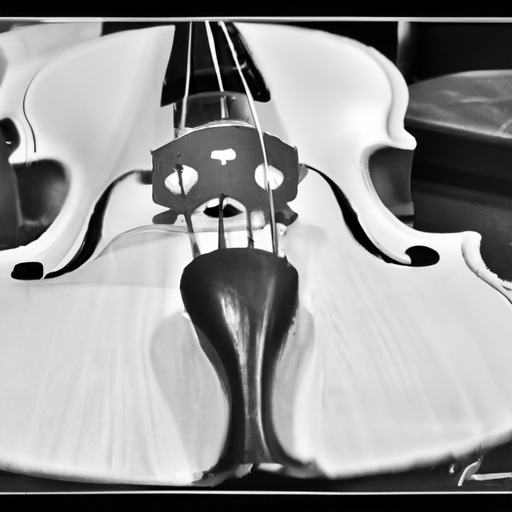
A. Background information on the violin

The violin is a string instrument that has been around for centuries. It is known for its beautiful sound and versatility, making it a popular choice for musicians of all genres. The violin is played by using a bow to create vibrations on the strings, which produce the sound. It requires precise finger movements and proper technique to produce the desired notes and tones.

B. Importance of learning to play the violin
Learning to play the violin is not only a rewarding experience but also offers numerous benefits. It helps in the development of fine motor skills, hand-eye coordination, and overall discipline. Playing the violin also improves cognitive abilities, memory, and concentration. Furthermore, it provides a creative outlet for self-expression and can be a source of joy and fulfillment.
C. Overview of the article
This article aims to provide simple and practical tips for beginners who are interested in learning to play the violin. It will cover various aspects such as choosing the right violin, proper posture and positioning, learning the basics, developing good practice habits, using the right tools and equipment, building finger strength and dexterity, playing with emotion and expression, overcoming common challenges, and concluding with encouragement for continuous improvement.
A. Factors to consider when buying a violin
When buying a violin, several factors should be considered. These include the budget, the skill level of the player, and the desired sound quality. It is advisable to seek guidance from a professional violinist or a trusted music store to ensure a suitable choice.
B. Types of violins available
There are different types of violins available, ranging from student models to professional ones. Student violins are typically more affordable and suitable for beginners, while professional violins are crafted with higher quality materials and offer superior sound. Intermediate violins are designed for players who have progressed beyond the beginner level.
C. Importance of testing the violin before buying
It is crucial to test the violin before making a purchase. This involves playing various notes and scales to gauge the sound quality, testing the bow to ensure it produces a smooth sound, and inspecting the overall condition of the instrument. Testing the violin allows the player to assess its comfort, playability, and suitability.
A. Correct posture for playing the violin
Proper posture is fundamental to playing the violin effectively. The player should sit or stand up straight, with the shoulders relaxed and the chin slightly tucked. The left foot should be slightly forward, and the weight should rest evenly on both feet.
B. Holding the violin correctly
The violin should be held with the left hand supporting the neck and the scroll pointing slightly upwards. The right hand should hold the bow firmly but not too tightly, with the thumb resting on the frog and the fingers curved around the bow stick.
C. How to position the left hand on the violin
The left hand should form a relaxed and curved shape, with the fingers resting on the strings. The thumb should lightly touch the back of the neck, providing support and stability. Proper finger placement is crucial for producing accurate notes and preventing tension or strain.
A. Understanding the different parts of the violin
Before diving into playing the violin, it is important to familiarize yourself with its different parts. This includes the scroll, pegbox, fingerboard, strings, tailpiece, chinrest, and soundholes. Understanding the purpose and function of each part will enhance your overall playing experience.
B. Learning how to tune the violin
Tuning the violin is an essential skill that every violinist must learn. It involves adjusting the tension of the strings to achieve the correct pitch. This can be done using an electronic tuner, a pitch pipe, or by matching the pitch with another tuned instrument.
C. Basic techniques for playing the violin
Learning basic techniques such as bowing, fingering, and producing different bow strokes is crucial for playing the violin. It is important to start with simple exercises and scales to build a strong foundation. Practicing with a metronome can help develop a sense of rhythm and timing.
A. Setting aside regular practice time
Consistency is key when learning to play the violin. Setting aside dedicated practice time every day or multiple times a week is important for progress. Even short practice sessions can be effective if done regularly.
B. Practicing with a purpose
Having a clear goal or objective for each practice session helps focus and maximize productivity. This can include working on specific techniques, learning new pieces, or refining existing repertoire. Breaking down challenging passages into smaller sections and practicing them slowly can facilitate learning.
C. Setting achievable goals
Setting realistic and achievable goals is essential for maintaining motivation and measuring progress. Goals can be short-term or long-term, such as learning a particular piece, performing in front of others, or participating in a music competition. Celebrating milestones along the way helps boost confidence and keeps the learning journey enjoyable.
A. Importance of using a shoulder rest
Using a shoulder rest provides support and comfort while playing the violin. It helps in maintaining proper posture, reduces strain on the neck and shoulder, and allows for better sound production. There are various types of shoulder rests available, so finding the one that suits your body type and playing style is important.
B. Using the right bow
The bow is a crucial component of playing the violin, and using the right bow can greatly impact the sound quality. Different bows have different characteristics, such as weight, balance, and flexibility. It is advisable to try out different bows to find the one that feels comfortable and produces the desired sound.
C. Using the right rosin
Rosin is applied to the bow hair to create friction with the strings, producing sound. Using the right rosin is important for achieving a good grip and sound projection. Different types of rosin suit different playing styles and climates. Experimenting with different brands and types can help find the one that suits your needs.
A. Simple exercises to build finger strength
Exercises that focus on finger strength and dexterity are crucial for developing the necessary finger control to play the violin. These can include finger lifts, finger taps, finger stretches, and finger pressure exercises. Practicing these exercises regularly can improve finger strength, agility, and precision.
B. Practicing scales and arpeggios
Scales and arpeggios are fundamental exercises that help build finger muscle memory, improve intonation, and develop a sense of finger placement on the fingerboard. Practicing different scales and arpeggios in various keys helps develop familiarity with different finger patterns and improves overall playing technique.
C. Using finger tapes to develop muscle memory
For beginners, using finger tapes on the fingerboard can be helpful in developing muscle memory and achieving accurate finger placement. Finger tapes act as visual guides and assist in producing correct notes. Gradually reducing reliance on finger tapes as muscle memory develops is recommended.
A. Understanding the emotional context of the music
Playing the violin is not just about hitting the right notes but also about conveying emotions and telling a story through music. Understanding the emotional context of a piece helps in expressing the intended mood and connecting with the audience.
B. Connecting with the music
Developing a personal connection with the music being played enhances the overall performance. This involves listening to different interpretations of the same piece, studying the composer's intent, and finding personal meaning and expression within the music.
C. Using dynamics to add expression
Dynamics refer to variations in volume, from soft to loud, in a musical piece. Using dynamics effectively adds depth, emotion, and expression to the music. Mastering the art of using dynamics requires control over bow pressure, speed, and contact point on the strings.
A. Dealing with aching fingers
Playing the violin can often result in sore or aching fingers, especially for beginners. Regular breaks, proper warm-up exercises, and gradually building up playing time can help prevent or alleviate finger discomfort. Applying finger tape or using finger positioners can also provide temporary relief.
B. Struggling with intonation
Intonation, or playing in tune, is a common challenge for violinists. Regular ear training exercises, playing with a reference pitch source, and using electronic tuning devices can help improve intonation. Practicing scales, arpeggios, and intervals also enhances the player's sense of pitch and intonation.
C. Overcoming performance anxiety
Performance anxiety is common among musicians, but with practice and exposure, it can be overcome. Preparing for performances by rehearsing in front of others or recording oneself, deep breathing exercises, positive visualization, and focusing on the music rather than the audience can help reduce performance anxiety.
A. Recap of the tips for learning to play the violin
In conclusion, learning to play the violin requires dedication, patience, and regular practice. By following the tips outlined in this article, including choosing the right violin, maintaining proper posture and positioning, learning the basics, developing good practice habits, using the right tools and equipment, building finger strength and dexterity, playing with emotion and expression, and overcoming common challenges, beginners can embark on a fulfilling musical journey.
B. Encouragement to continue practicing and improving
Learning an instrument like the violin is a lifelong endeavor. It is important to stay motivated, persevere through challenges, and continue practicing to improve. With time and consistent effort, progress will be evident, and the joy of playing the violin will only deepen.
C. Final thoughts on the importance of learning to play the violin
Learning to play the violin is not only about mastering an instrument but also about developing discipline, patience, and a love for music. Whether one chooses to pursue a professional career or play for personal enjoyment, the violin offers a unique avenue for self-expression and creativity. It is a journey worth embarking upon.
For more information on learning to play the violin, click here.